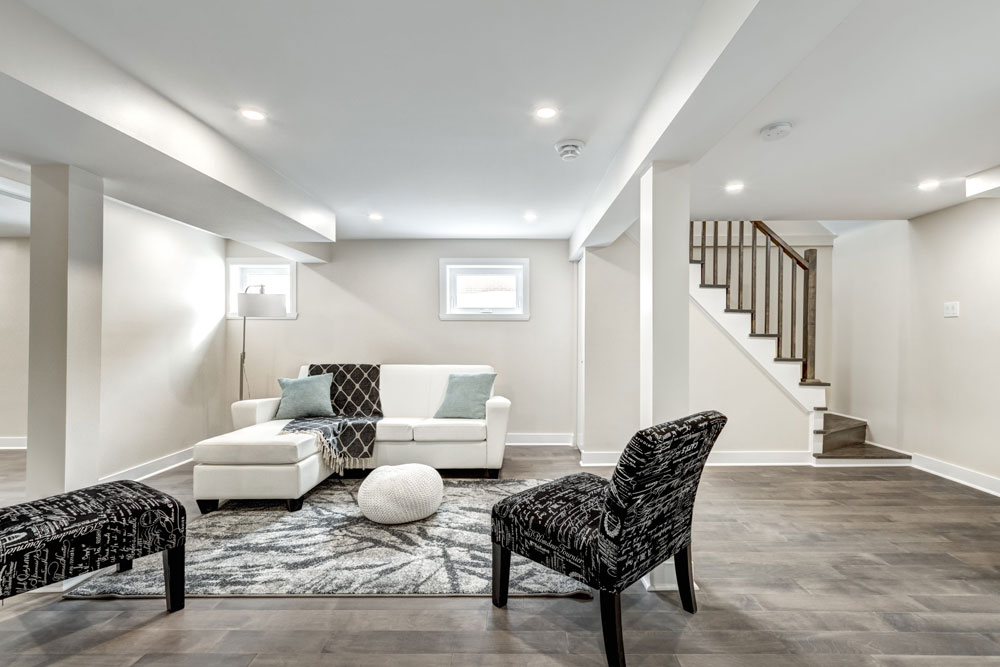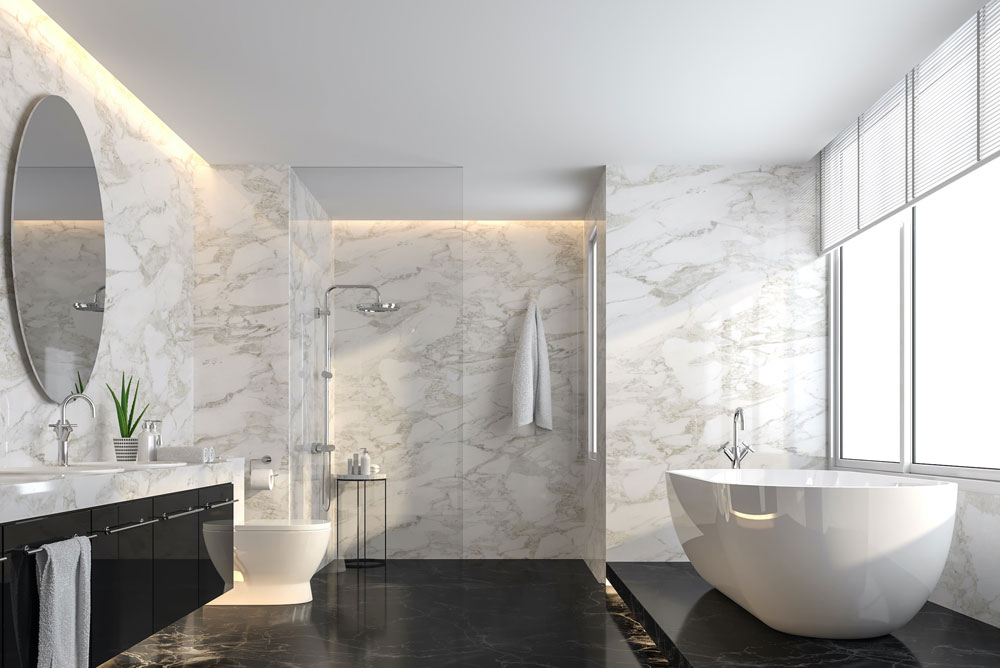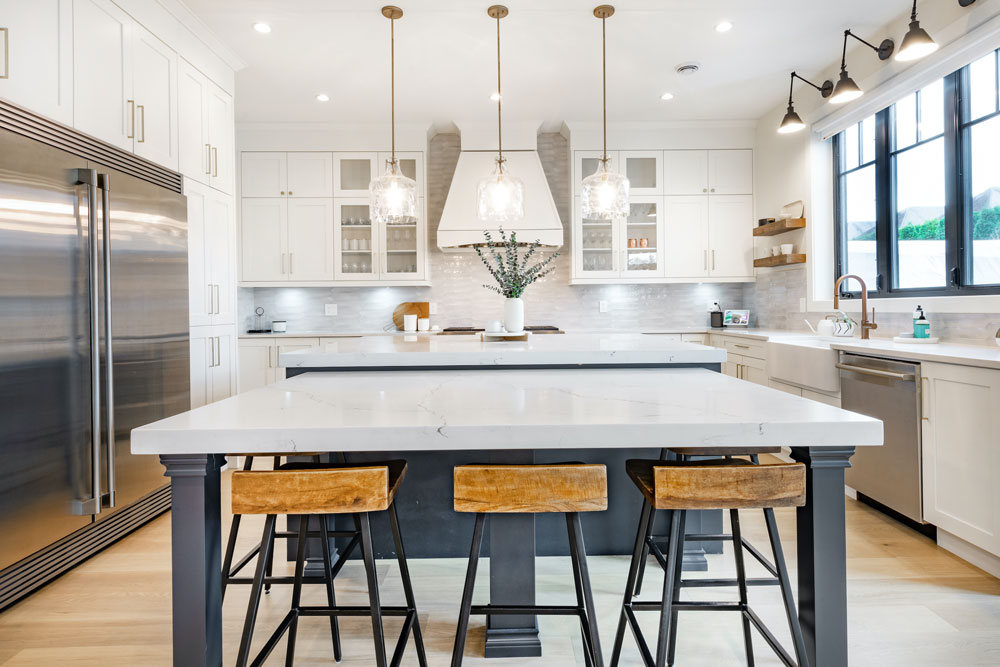7 Ways to Stop Your Basement Flooding

A finished basement is an incredibly valuable asset in a home, providing extra storage or living space to suit your needs. However, its below-ground location means your basement can be vulnerable to extreme weather, with heavy rainfall risking the cost and damage of flooding.
Fortunately, there are several home improvement steps you can take to prevent your basement from flooding, ranging from easy to extensive. Here are seven essential tips to get you started.
1) Fix Leaks and Seals
The first and perhaps most important step is to check around the lower perimeter of your home’s structure to make sure there are no obvious ways for water to get into your basement. Open grills, leaky windows, degraded woodwork, and so on can all let water in even on moderately rainy days. Attend to all these small issues, and a sudden storm’s rainfall has fewer easy ways of causing problems.
Also, if you have patios or pathways adjoining your home, check that the edges are properly sealed with no cracks against the wall and that any water poured over them drains safely away. An inground pool can also be a potential source of trouble, so make sure to keep the liner in good shape if you want to avoid seepage.
2) Check Your Landscaping
Ideally, the lawn, driveway, and other parts of your yard should slope away from your home so that any excess water is diverted away. At the very least, the slope shouldn’t actively channel water toward your foundation walls.
If necessary, look for ways of creating an outward slope, whether that’s through heavy landscaping to change the grading or a relatively simple project like installing underground drainage pipes to let surface water drain away more quickly.
3) Mulching Considerations
Using mulch in your yard can be a double-edged sword when it comes to drainage. On the plus side, a heavy mulch will retain water for longer on the surface, allowing natural drainage more time to clear a heavy downpour.
However, if the mulch is too close to your home’s sidings, the water can start to seep into your basement as it tries to find an escape path. To prevent this, make sure there’s at least a 15cm gap between the edge of the mulch and your home’s walls, and use waterproof edging to create an impermeable boundary between the two.
4) Extend the Downspouts
Rain falling on your roof needs to go somewhere, and that’s usually through your downspouts and out into your yard. If the downspout outlets are too close to your home’s structure, the water can easily build up and overflow into your basement. Ideally, extend downspouts so that they discharge at least two metres away from the foundation wall’s base, preferably sending the water down a slope to let gravity help it flow harmlessly away.
Also, if possible, don’t discharge roof water directly into the sewer system through pipes that might already be overloaded. Diverting it nearer to the roadside instead will let the greater capacity of public drains handle the excess, although make sure that this won’t cause your neighbours any drainage issues at the same time.
5) Clear Gutters and Pipes
A buildup of leaves and other debris can clog guttering and downspouts, stopping them from draining so easily. Eventually, the water will overflow, cascading down your home’s exterior and potentially saturating the ground more quickly than it can drain.
Clearing your gutters at least twice a year will help keep rain draining more freely. If you’re unsure about tackling this job, a qualified roofer or general contractor from our trusted network will be happy to handle this tricky job safely. They can also check for other developing roof problems at the same time.
6) Check the Plumbing
Not all floods are caused by rainwater. Interior leaks from plumbing will naturally follow gravity down into the basement, causing dampness and possible flooding even if the leak isn’t immediately visible or coming from an obvious source, such as the bathroom. Every so often, hire a plumbing contractor to inspect the whole system, including the main drain connection, to make sure potential issues aren’t building up unnoticed.
7) Install a Sump Pump
Even with careful precautions and thorough maintenance, some areas are just too wet to keep a basement bone dry at all times. Installing a sump pump will help ensure that if water does get in, it’ll be removed as quickly as possible rather than building up enough to cause damage. A sump pump should be reliable or the false confidence it instills could wind up costly. Have your pump professionally installed by a recommended contractor, ideally alongside a backup system, and then maintain it regularly to ensure it’ll work properly when you need it most.
Let MyHomeUpgrade.ca keep your basement dry with our team of expert advisors available to help with your home improvement projects every step of the way. And if you want to make more of your basement, use our free improvements and renovations calculator to find which reno options are available within your budget. We can also offer flexible financing options so you can stretch your budget even further.
You May Also Like
7 Major Home Renovation Mistakes to Avoid

Any major home renovation will be a costly exercise, but the expense can quickly spiral out of control if the project isn't carefully planned and competently carried out. The first step toward achieving home renovation success is to avoid these seven common planning mistakes that can greatly increase the cost and hassle of any project,…
7 Tips to Easily Renovate Your Bathroom on a Budget

A bathroom renovation can make a huge difference in your home, but it can also be an expensive home improvement project to take on if you’re not careful. Because of the potentially high cost, many people delay upgrading their bathroom and miss out on all the extra comforts and convenience that a remodel can provide.…
6 Ways to Personalize Your Kitchen Renovation

If you're planning a kitchen renovation, there are countless design ideas available online to use as inspiration. Using a pre-existing design is a great way to save money on your kitchen renovation. However, your kitchen should be an expression of your tastes and personality, so relying too much on someone else's ideas can lead to…



